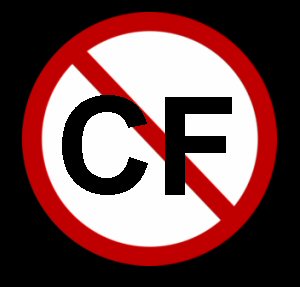Retired NRL LENR Expert No Longer Believes in Cold Fusion

April 24, 2013 – By Steven B. Krivit –
Graham Hubler, an expert cited in CBS’s 2009 “60 Minutes” program “Cold Fusion Is Hot Again,” no longer believes that cold fusion is real.
Hubler now makes a key distinction between “cold fusion” and the real anomalous heat and nuclear effects seen in LENRs (low-energy nuclear reactions).
The distinction separates LENRs as legitimate science from the hypothesis of “cold fusion,” which lacks scientific support.
The lack of this distinction is one of the fundamental reasons why “cold fusion” is the most controversial subject in science in the past 100 years. It is the primary reason for the stigma in the field, the lack of funding and difficulties with the patent office.
New Energy Times first reported this crucial distinction four years ago beginning with our 2008 article “It Doesn’t Look Like Fusion.” We followed this with public conference presentations, published encyclopedia chapters, and the 2010 special report “Cold Fusion Is Neither.”
Our Web page “Distinction Between LENR and ’Cold Fusion’ – Emergence and Recognition of a New Science” provides an overview. Until 2012, researchers who believed that LENRs were “cold fusion” dismissed our distinction as “mere semantics.”
[DAP errMsgTemplate=”” isLoggedIn=”N”]
Login or Subscribe to remove this notice
Professional Journalism – LENR Facts
Original online content only at New Energy Times
[/DAP]
In 2012, Hubler was head of the Materials and Sensors Branch of the Naval Research Laboratory. He was closely involved in NRL’s LENR research program for many years.
Hubler retired from NRL last year and has since accepted a position working for the Department of Physics and Astronomy at the University of Missouri as the director of the Sidney Kimmel Institute for Nuclear Renaissance.
Hubler reports to Robert Duncan, another expert cited by CBS. Duncan is the vice chancellor of research at the University of Missouri. Hubler is part of the organizing committee of the 18th International Conference on Condensed Matter Nuclear Science, to be held at the University of Missouri this summer.
[DAP errMsgTemplate=”” isLoggedIn=”N”]
_____ Article continues for subscribers. Click here to subscribe. _____
[/DAP]
[DAP errMsgTemplate=”” isLoggedIn=”Y”]
Among other evidence CBS used to portray “cold fusion” as real, it displayed a document that Hubler wrote for the Defense Advanced Research Projects Agency while he was an employee of NRL. At the time, Hubler had never made a public distinction between the anomalous heat seen in LENRs and “cold fusion.”
New Energy Times recently discovered that, on June 29, 2012, Hubler asked the editors of the Wikipedia “cold fusion” article to makes changes.
“I want to remove my name from this section shown below in association with ‘cold fusion.’ I perform research on the anomalous heat effect, which is a real phenomenon and is certainly not cold fusion,” Hubler wrote.
New Energy Times contacted Hubler by e-mail on April 11, 2013, and asked him why he requested the edit.
“I do not believe that the anomalous heat effect is d-d fusion,” Hubler wrote.
New Energy Times asked Hubler specifically why he did not believe that the anomalous heat effect observed in LENRs was the result of d-d fusion.
“The usual [reasons]. Why no radiation? Only if [cold fusion theorist Peter] Hagelstein is right can it be d-d fusion,” Hubler wrote.
New Energy Times asked Hubler what prompted his new perspective.
“A major reason that CF folks and physicists cannot converse,” Hubler wrote, “is that physicists think that the CF folks are convinced that the CF effect is d-d fusion, and physicists are convinced that d-d fusion is impossible. The conversation is doomed from the start.
“As for Wikipedia, the way it was worded, it appeared that I thought it was d-d fusion, and I did not want physicists who might read the article to be prejudiced against me. I fully support that there is an unknown anomalous heat effect [in LENRs].”
Hubler’s reasoning was valid, but the conflict he described was nothing new. The lack of radiation in LENRs has existed for the duration of the controversy. New Energy Times asked him why it was now important for him to make the distinction.
“I think I have always had this opinion,” Hubler wrote.
If he had, he didn’t tell anyone. New Energy Times asked him why it was important for him to go public with the distinction now.
“Purely politics,” Hubler wrote.
Questions? Comments? Submit a Letter to the Editor.

